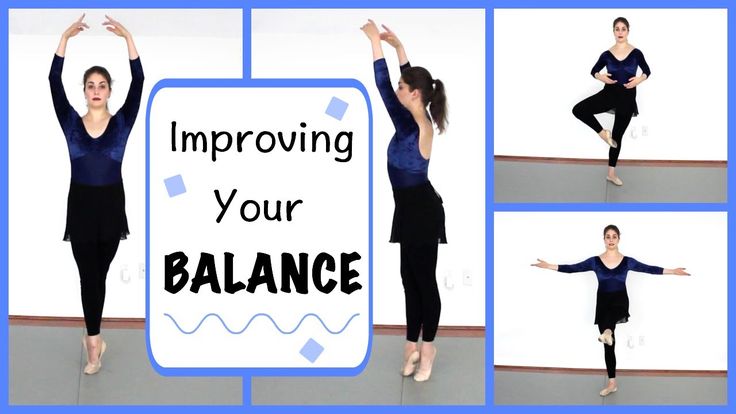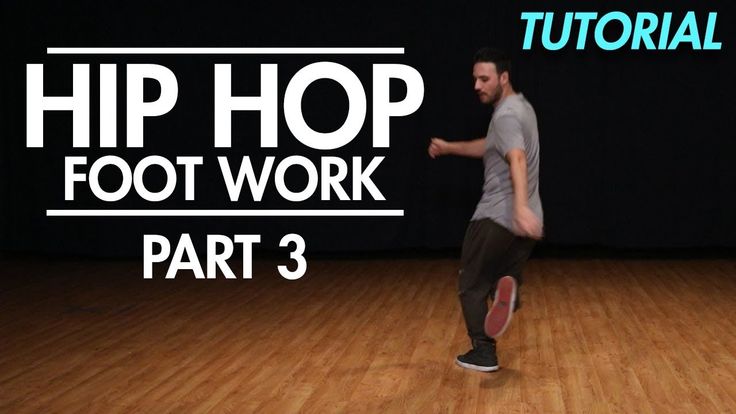How to improve your balance in dance
Feeling Wobbly? Try These Four Exercises for Longer, Stronger Balances
If you’re feeling wobbly in adagio or wish you could hold your piqué attitude a bit longer, there are ways to assess and improve your balance. Try these four exercises, recommended by Heather Southwick, Boston Ballet’s director of physical therapy.
You’ll need:
- painter’s tape or masking tape
- TheraBand
- something sturdy to tie the TheraBand to, like a chair leg
Airplane Series
The airplane test assesses dynamic balance, or how stable you are as you move through positions. “It can be a helpful indicator of where in the chain is difficult for you,” says Southwick. This progression lets you focus on balance and strength simultaneously, while preparing you for adagio.
Emily Giacalone, modeled by Elizabeth Steele of Steps on Broadway Youth Programs. 1.
Start in parallel passé and extend to arabesque, creating a straight, horizontal line from head to toe. Hold your arms in a T, like an airplane.
2.
Plié and straighten 5 times. (Work up to 10 repetitions.) If you’re feeling stable, incorporate the arms, reaching toward the floor as you plié, and returning them to a T as you straighten.
Ask yourself:
Can you maintain a flat line from your head to your toes and keep your pelvis even? “A lot of people will twist the pelvis or turn that leg out,” says Southwick. Check your weight placement: Are you back in your heel, or are you too far forward on your toes?
Add a progression:
Standing on a straight leg, rotate the torso open so one arm reaches toward the floor and the other toward the sky. Return to the flat-backed arabesque position.
Single-Leg Balance with Eyes Closed
Emily Giacalone, modeled by Elizabeth Steele of Steps on Broadway Youth Programs.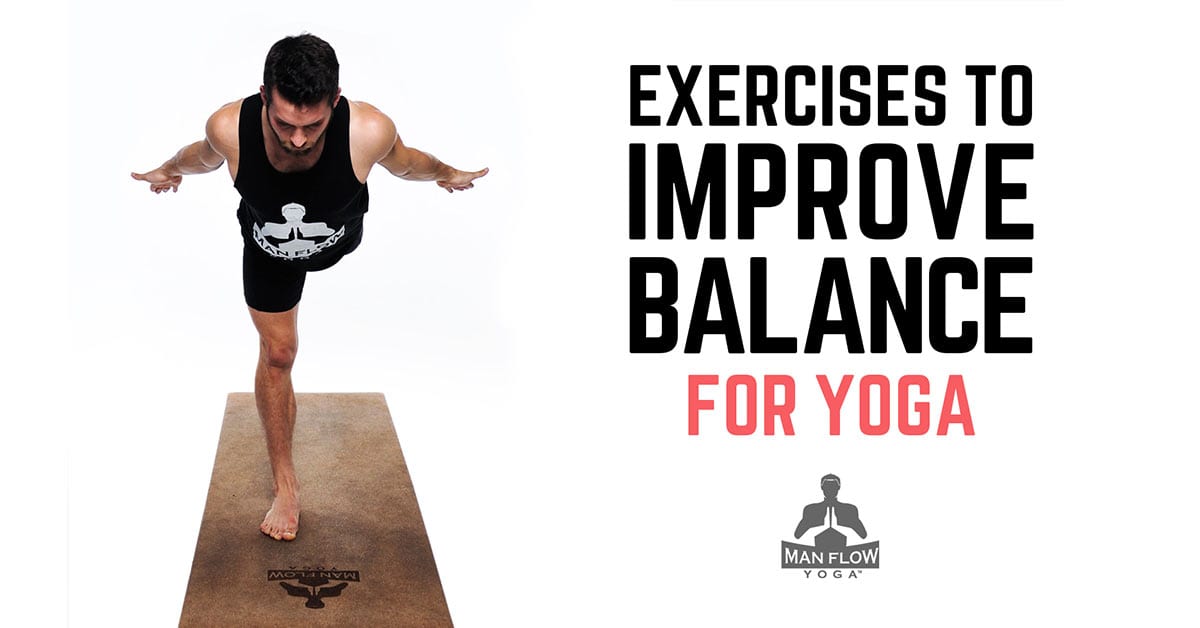
“One of the main tests that we do on professional dancers is to see if they can balance for 60 seconds with their eyes closed. Everyone should be able to do it for at least 30, on one leg, in parallel passé,” says Southwick. If you’re having trouble balancing, this test can reveal areas of weakness, like instability in the ankle, knee or hip.
Why parallel:
Testing your balance in parallel is important, she says, because your base of support is narrower versus when you’re working in turnout.
Injury recovery:
If you’ve had to scale back due to an injury, you may have lost some of your proprioceptive feedback (a sense of where the body is in space). Closing the eyes and balancing helps improve this without relying on your vision.
Make it more challenging:
Stand on a less stable surface, like a memory foam pillow or a BOSU ball, and repeat the balance with eyes open.
TheraBand Clock Exercise
Tie a band around something stable, like the leg of your bed or a table.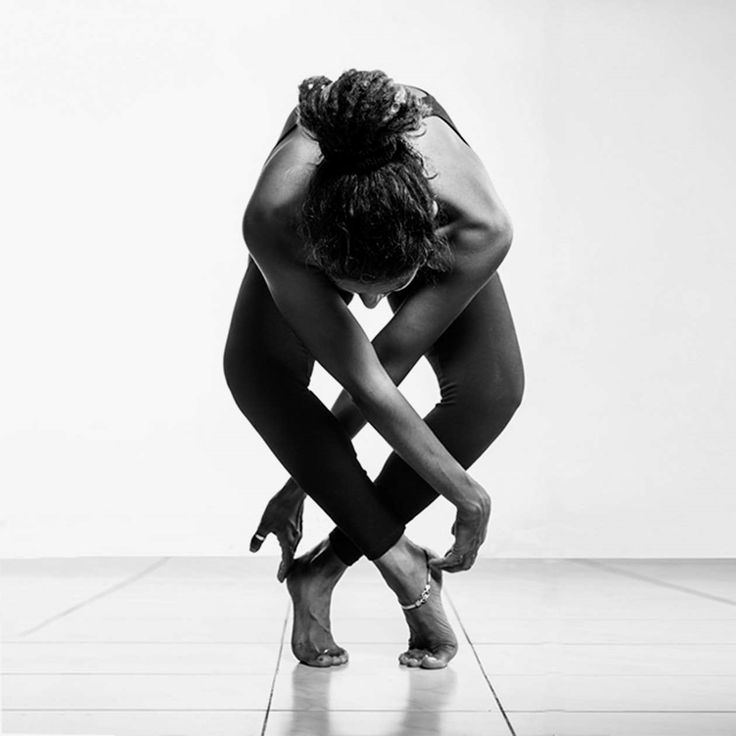 Stand in parallel with your right leg in the loop (and the support point to your right). Using both feet, relevé and lower into a plié with control. Rotate an eighth of a turn to your left, and repeat the relevé and plié. Continue working around the circle, like a clock, until you are facing backwards. (For one position, both feet will be wound up in the band. That’s okay.) Repeat on the other leg. This can also be done turned out.
Stand in parallel with your right leg in the loop (and the support point to your right). Using both feet, relevé and lower into a plié with control. Rotate an eighth of a turn to your left, and repeat the relevé and plié. Continue working around the circle, like a clock, until you are facing backwards. (For one position, both feet will be wound up in the band. That’s okay.) Repeat on the other leg. This can also be done turned out.
Emily Giacalone, modeled by Elizabeth Steele of Steps on Broadway Youth Programs.
Emily Giacalone, modeled by Elizabeth Steele of Steps on Broadway Youth Programs.
Emily Giacalone, modeled by Elizabeth Steele of Steps on Broadway Youth Programs.
Watch your alignment: “The TheraBand is pulling, so you have to work to maintain balance with good alignment,” says Southwick. Make sure you don’t sickle your ankle or overcompensate in the other direction.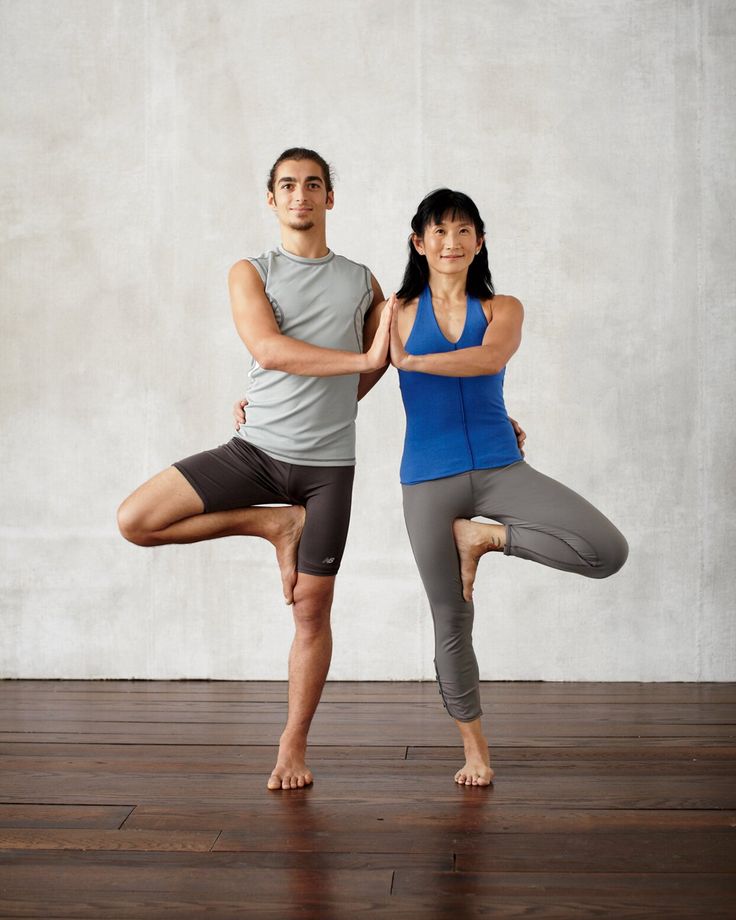
Make it more challenging:
Try the series balancing on one leg, with the other foot in coupé or passé.
Star Excursion Balance Test
Emily Giacalone, modeled by Elizabeth Steele of Steps on Broadway Youth Programs. Tape a starburst pattern on the floor and stand in the middle of it with your supporting leg in plié. Reach the working leg out in tendu, along the tape line directly in front of you, as far forward as you can. Return to center and work your way around the star, doing a tendu along each line. (Try to keep the hips square, though this won’t be possible in all positions.) Southwick recommends practicing this in both parallel (see left) and turnout.
Emily Giacalone, modeled by Elizabeth Steele of Steps on Broadway Youth Programs.
Why it’s good for dancers:
It requires strength, flexibility and proprioception.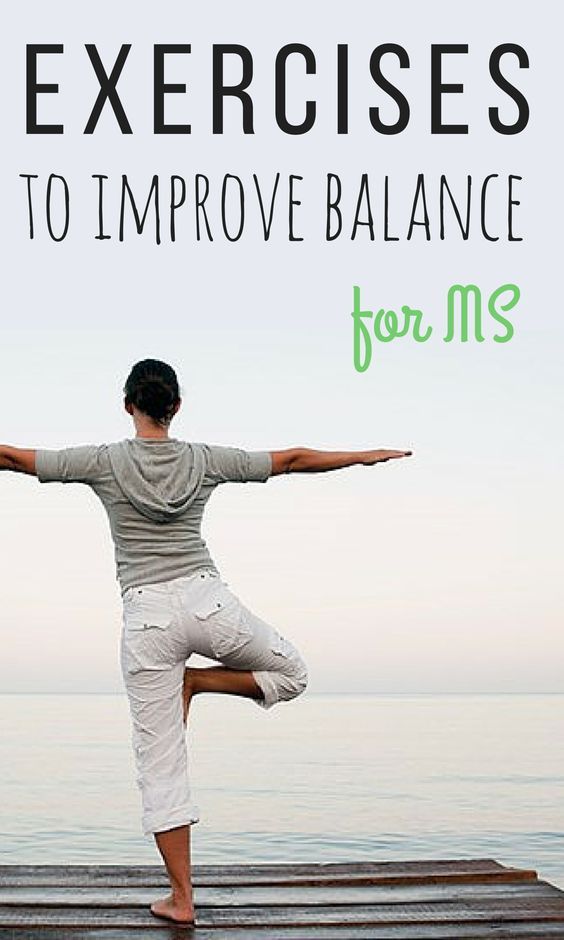 “The working leg is basically going on an excursion,” Southwick says of the exercise’s name. As you work your way around the star, you’re experiencing different forces on your standing leg.
“The working leg is basically going on an excursion,” Southwick says of the exercise’s name. As you work your way around the star, you’re experiencing different forces on your standing leg.
Make it more challenging:
Holding the arms in second provides the most stability, but you can also try it with your arms overhead in fifth or crossed in front of you. “You’re trying to simulate things you might do in adagio,” says Southwick.
5 Exercises 5 Minutes A Day To Improve Balance
Dance InsanityDance Conditioning
Balance is super important, especially when we followers have to dance in those 3 inch stilettos! Not saying it’s unimportant for the leaders, cos you also have to deal with heels too. All 1.5″ of it! 😉 After all, how confident a dancer can you be, if you are always worrying about your balance? So, make your balance rock solid by doing these 5 fast and effective exercises. Only 5 minutes a day to improve balance. No excuses! Let’s #getdancing!
Exercise #1: Single Leg Lifts
2 sets of 10 reps.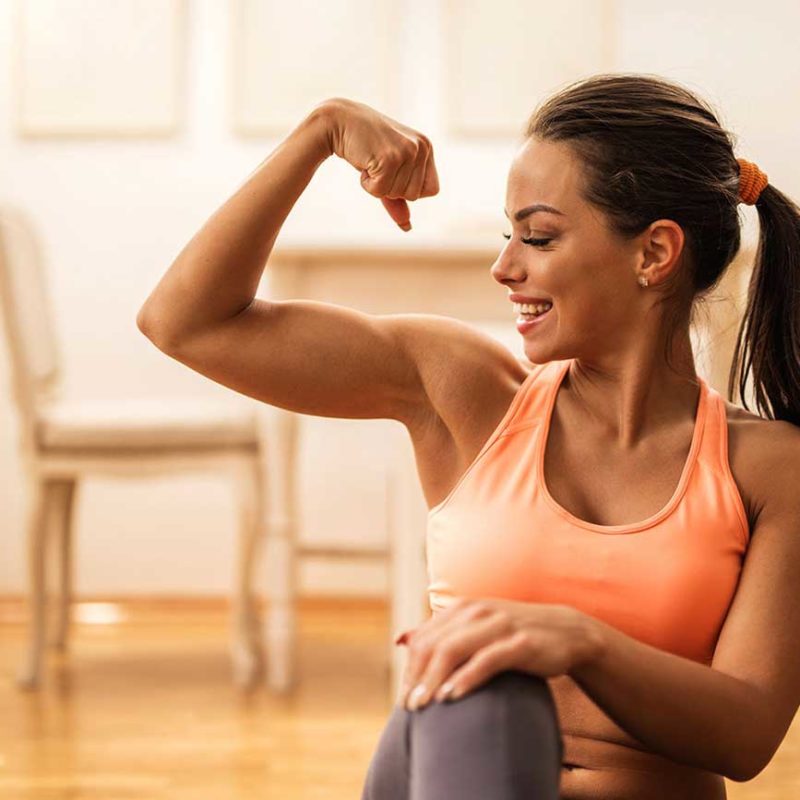 (1 rep = 1 forward, 1 side, 1 back)
(1 rep = 1 forward, 1 side, 1 back)
Do 1 set on each leg. Rest 10 seconds in between sets.
Benefits: Full Leg & Glutes Strengthening to improve balance
Tips:
1. Engage your inner thighs as you lift your leg.
2. Pause briefly at the top of the lift.
3. You can adjust the height of your leg depending on how flexible you are. Even if it’s only 2 inches off the floor, that’s ok!
4. Keep your back straight. Do not hunch over trying to get your leg higher in the air.
Exercise #2: Super "Wo"Man Crunches
2 sets of 10 reps. (1 rep = 1 stretch and crunch on both sides)
Rest 10 seconds in between sets.
Benefits: Core, Back and Glutes & Shoulders
Tips:
1. Stretch your fingers and toes away from each other.
2. Keep your core super tight and your back straight.
3. Squeeze your glutes as you lift your leg.
4. Keep your shoulders square & away from your ears (i.e.: don’t hunch)
Exercise #3: Walk The Tight Rope
2 sets of 10 reps. (1 rep = 4 walks forward, 4 walks back)
Rest 10 seconds in between sets.
Benefits: Legs, Arms and Core Strength & Alignment
Tips:
1. Keep your steps very tiny.
2. Keep your heels as high off the floor as possible.
3. Squeeze your thighs and keep your butt tight.
4. Look directly forward.
5. Through it all, pull your towel taut and keep your elbows straight.
Exercise #4: Flip Flop Toe Touches
2 sets of 10 reps. (1 rep = Toe touch on both sides)
Rest 10 seconds in between sets.
Benefits: Shoulder strength and Obliques
Tips:
1. Touch your toes and hold briefly on each side.
2. Keep your hips high as you rotate onto each side.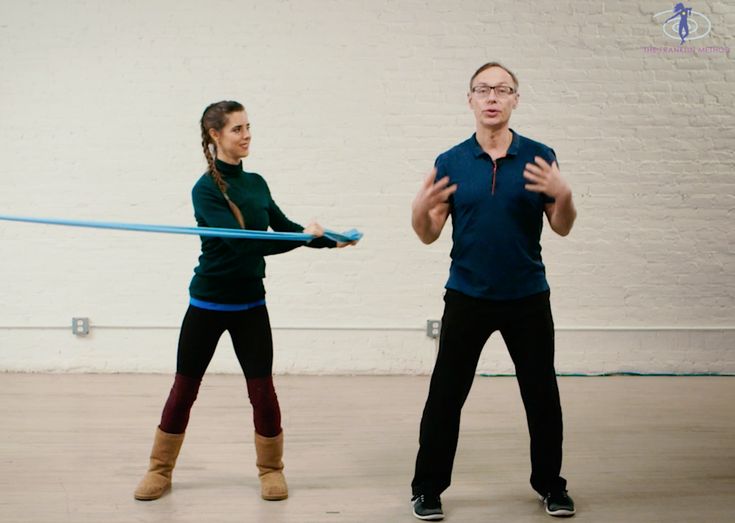
3. Keep your back flat whenever you transition into the neutral plank position.
Exercise #5: See Saw
2 sets of 10 reps (Do 1 set of 10 reps on each leg)
Rest 10 seconds in between sets.
Benefits: Full Body Strengthening & Balance
Tips:
1. Anchor standing leg firmly into the ground by engaging the glutes.
2. Stretch your leg long behind you as you lift it up.
3. Look directly down and keep your neck long as your body gets parallel to the floor.
4. Keep your core super engaged.
More core conditioning exercises here.
A final word about these exercises to Improve Balance:
Do take your time doing each exercise and be sure to keep your muscles engaged for a better workout. If you struggle with the balance, that’s ok. You have permission to fall over! Just keep doing them and you will definitely see improvement.
Let me know which exercises you find easy and which ones are more challenging!
TAGS: 5 Min Workout Balance
BALANCE.
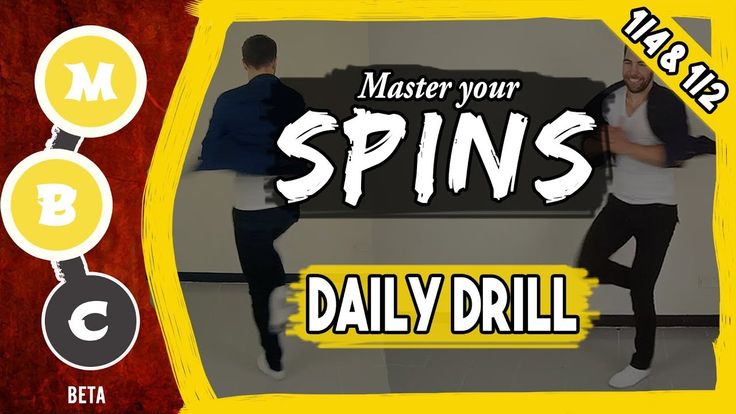 Part 1: Personal: zoukability — LiveJournal Author: Murasheva Nadezhda, Moscow
Part 1: Personal: zoukability — LiveJournal Author: Murasheva Nadezhda, Moscow Why is it difficult to stand on your feet in some cases? It happens that for some reason the body collapses, although the movement has long been worked out. And on rotations... The reasons for losing balance can be different, and I propose to understand them in detail and at the same time understand what can be done about it. This is the first article on balance, which is devoted to the general theory and personal balance of any person, regardless of gender and style of dance.
Balance is one of my favorite topics. All the time that I went to different classes, all I heard and knew about balance was "spread your legs wide" or "pull your abs and ass together." So I danced for a long time as a beginner who does not understand how it all really works, until ballet and modern jazz came into my life. And then my world began to turn upside down.
*There is a lot of nerdy information ahead*
I can imagine my evolution of ideas about balance as follows:
- Get into a stable position.
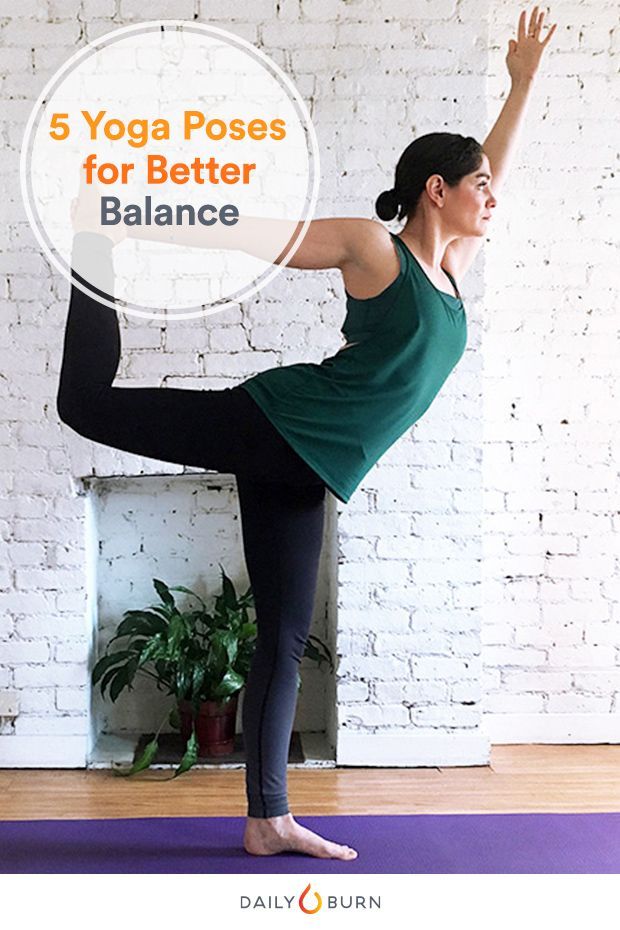 The more difficult it is to maintain balance, the wider the legs. Partners who put their feet together on the work of the body - how the hell do they do it ?! It's so unstable.
The more difficult it is to maintain balance, the wider the legs. Partners who put their feet together on the work of the body - how the hell do they do it ?! It's so unstable. - Yes, I have a butt and abs, how useful they are!
- ...So that's what it means to keep your back! The feeling of self-importance jumped sharply, as if she had joined the secret knowledge.
- The true meaning of the cross at the feet is comprehended. Partners who put their legs wide - are they really comfortable?) 9&t, more feet.
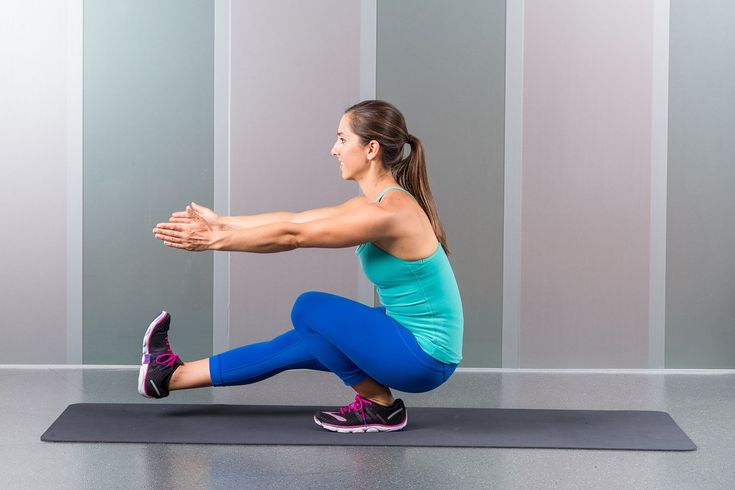 The phrase "turn on your back" would not have told me at that moment absolutely nothing.
The phrase "turn on your back" would not have told me at that moment absolutely nothing. With this article I want to help dancers who really need this information. Girls are more aware of the need to work on balance because of all the insane hell we're having in dancing. But all this is just as necessary for partners, since they need to keep themselves steady and be able to support their partner if necessary.
If you have strong training, then you have known all this for a long time, you know how and definitely cool;)
Let's start with pure theory. Having imagined it well, it will be easier for you to understand why you need what will be discussed later.
________________________________________
I. VERTICAL AXIS AND CENTER OF GRAVITY
Center of Gravity is the point on the ground where your maximum weight falls. It may not match the position of your feet.
Vertical axis - an imaginary vertical that comes out exactly from the center of gravity and is directed upwards (the so-called line of gravity).
To feel your center of gravity shift, simply stand up straight with your feet parallel and slowly put more weight back into your heels, then forward into your toes, right and left. Along with the shift in the center of gravity, you deviate from the vertical axis. Now put one foot forward and the other back. Feel how the center of gravity can be in the middle of your feet, on the front or on the back foot, go to the right or left. This happens to you all the time in the dance, and the position of the center of gravity has a huge impact on your dance.
As long as the center of gravity does not go beyond the foot, you can keep your balance in this position. But if you give too much weight, and the center of gravity goes beyond the feet, then you will feel like you are falling over. In dance, this often happens for various reasons.
There are three ways to restore the overwhelmed balance in this position:
- Take a step in the right direction .
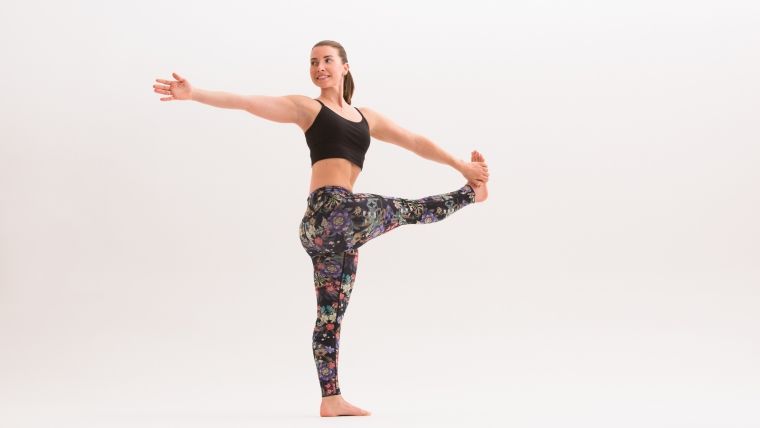 In this way, you shift your body so that the center of gravity is again under the feet, and the vertical axis again passes exactly through your entire body. You are catching up with the departed center of gravity. Within the framework of a paired social dance, this is the regulation of the length and direction of one's step. There are situations where this is exactly what is needed. We will talk about this in more detail later in the continuation of article "9.0046 BALANCE. Part 2: Balance in a pair ".
In this way, you shift your body so that the center of gravity is again under the feet, and the vertical axis again passes exactly through your entire body. You are catching up with the departed center of gravity. Within the framework of a paired social dance, this is the regulation of the length and direction of one's step. There are situations where this is exactly what is needed. We will talk about this in more detail later in the continuation of article "9.0046 BALANCE. Part 2: Balance in a pair ". - Strongly "pull" yourself up. The muscles of the back, abs and buttocks can pull yourself out of the blockage if the loss of balance is not critical. It takes some time to find the right muscles in yourself and learn
- Balance yourself The pelvis deviates to one side and the upper part of the body to the opposite. That is, the hips to the right - shoulders to the left, butt back - shoulders forward. This way you return the center of gravity under you, remaining in place, and symmetrically position your body on both sides of the vertical axis.
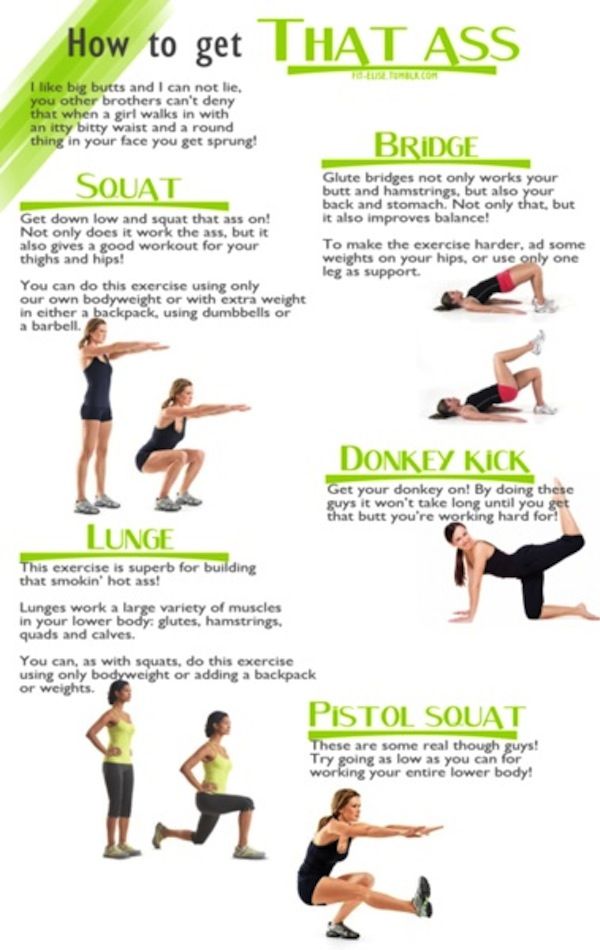 This process occurs in the dance as consciously, when you clearly understand the mechanics of movement (deep cambrai ), and unconsciously, when your body itself tries to compensate for the lack of balance (not always correctly and beautifully).This technique is hardly suitable for restoring lost th balance, but is the technical basis of a number of movements. In social dances, counterbalances in a couple are built on it.
This process occurs in the dance as consciously, when you clearly understand the mechanics of movement (deep cambrai ), and unconsciously, when your body itself tries to compensate for the lack of balance (not always correctly and beautifully).This technique is hardly suitable for restoring lost th balance, but is the technical basis of a number of movements. In social dances, counterbalances in a couple are built on it.
In zouk, the body will move a lot relative to the axis only on amplitude waves, on deep cambra (the axis passes through the press) and on counterbalances. All these movements are controlled and managed. In all other movements, the axis will pass through the entire body.
Perhaps you will say: "But what about all these movements with the tilt of the upper body? .." So only the frame shifts there, and the axis still passes through the whole body to the chest.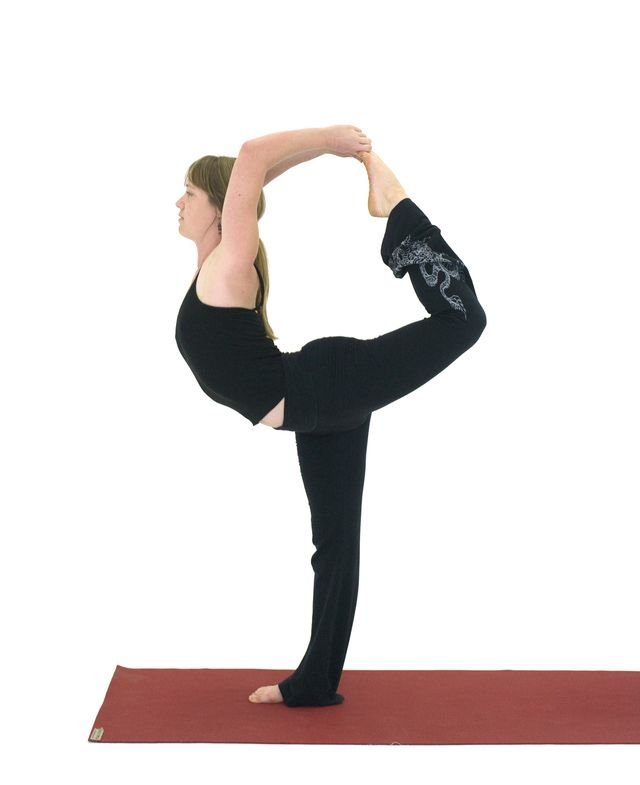 Illustrations for clarity:
Illustrations for clarity:
The formula for good balance in theory:
- Sensitively feel where the center of gravity is, control it.
- Maintain a vertical axis in your body.
In fact, what will need to be done is to remove the factors that lead to loss of balance and skidding in movements. Pump the body and control individual muscle groups. Correct the distance in pairs.
____________________________________________
II. FIXING MOBILITY
Imagine jelly. What happens if you shake the plate? It will start to wobble. At the moment of swaying, the center of gravity will walk from side to side. The stronger the impact, the more it will loosen up.
A relaxed body reacts in the same way to movement. If it is only your own movements, then the hesitation will be imperceptible, but it does not change anything. The back, shoulders will sway, a deflection in the lower back may appear, the hip joints will add more amplitude. Paired with a neat and experienced dancer, this will not bother you. But somewhere around 70% of the partners are those who shake the plate with varying degrees of force (Moscow statistics)) . The harder the dribble, the more furiously partner dribbles , the more you are swayed.
Paired with a neat and experienced dancer, this will not bother you. But somewhere around 70% of the partners are those who shake the plate with varying degrees of force (Moscow statistics)) . The harder the dribble, the more furiously partner dribbles , the more you are swayed.
Accordingly, in order not to be sausage, you must not be jelly and form a sufficiently elastic structure from your body. It has nothing to do with tightness and "woodenness" in the body. Let me explain the difference right away. Balance control, stability - this is the opening of the body, the direction "from the center", in particular - upwards. It's a feeling of elasticity. And tightness and "woodenness" is a closure, a direction "towards the center", towards oneself, the desire to make oneself smaller. Hands are glued to the body, shoulders rise to the ears, the back hunches as if in a desire to cover the chest from the energy of the partner. So it is not necessary.
Joints provide mobility of the body. Thanks to them, you can move, walk, dance. And because of them, your balance can become loose if they are too mobile.
Thanks to them, you can move, walk, dance. And because of them, your balance can become loose if they are too mobile.
The mobility of the joints is regulated by the muscles that adjoin them. To be honest, I hadn't thought about it before. Muscles can fix the joint in a certain position and limit its mobility. Now you only need to understand what and how to fix, and learn how to do it.
1. Back
The importance of the back in the dance in general and in maintaining balance - in particular - cannot be overestimated. The spine supports your body and has a huge impact on stability. If this complex long structure staggers and collapses in some part of it, then the balance will constantly walk. Just imagine.
Zouk often uses thoracic slopes. For such a design to be stable, you need a strong straight (!) Loin. This is the rod that holds the center and coincides with the vertical axis.
An even, stable position of the spine is held by many muscles.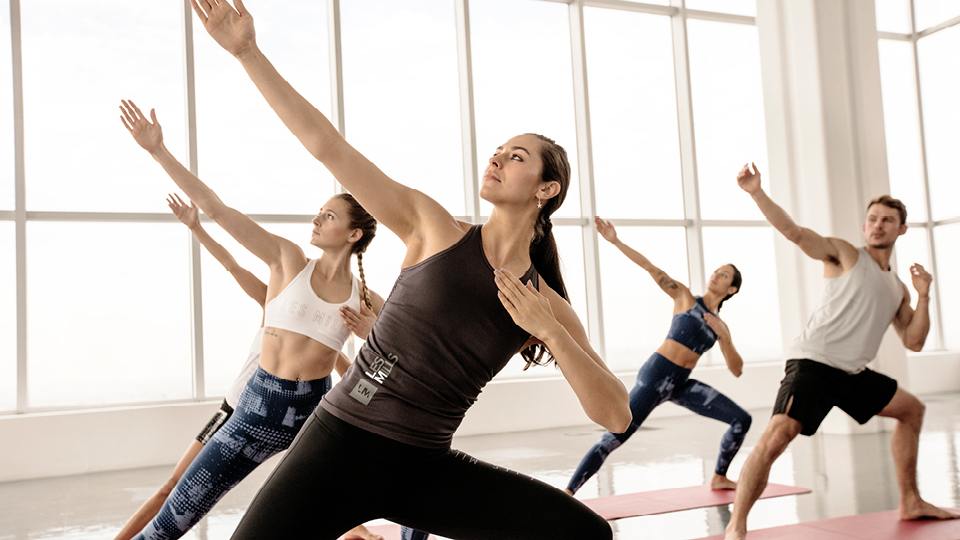 You will not be able to keep balance with your back if you pumped up only one muscle and forgot about others. You can do a hundred "boats" every day, and this will not give anything if the longest muscles of the back and the internal oblique muscles of the abdomen are not in good shape, for example. No wonder there is the concept of "muscle corset". The entire muscular corset must be harmoniously developed, and then everything will start to work out.
You will not be able to keep balance with your back if you pumped up only one muscle and forgot about others. You can do a hundred "boats" every day, and this will not give anything if the longest muscles of the back and the internal oblique muscles of the abdomen are not in good shape, for example. No wonder there is the concept of "muscle corset". The entire muscular corset must be harmoniously developed, and then everything will start to work out.
What happens in practice (we study the picture below) :
The entire press is pulled up ( The transverse abdominal muscles ) and Spit muscles of the abdomen , and the longest back muscles are pulled up upwards. These are the muscles that you can consciously control and physically feel their work in the dance.
When you need to resist strong pressure from the side and protect your lower back from unnecessary deflection, the press is collected more strongly, and quadratus lumborum . She helps girls save their backs from uncomfortable, dangerous cambras and from too strong an amplitude when it is not needed. For guys, this is a guarantee of safe performance of cambrai (especially if the partner collapses) and high-quality performance of "balao". During the "balao" the partner should not hang over the girl with his bodies, but on the contrary, he should be a stable support that does not bend anywhere.
She helps girls save their backs from uncomfortable, dangerous cambras and from too strong an amplitude when it is not needed. For guys, this is a guarantee of safe performance of cambrai (especially if the partner collapses) and high-quality performance of "balao". During the "balao" the partner should not hang over the girl with his bodies, but on the contrary, he should be a stable support that does not bend anywhere.
The longissimus dorsi is probably the hardest muscle to master, but once you find it, you will feel euphoric at how much easier it has become for you to dance. And especially rotate ;)
How to achieve it all:
Attend individual classes with a teacher who will select a set of strengthening exercises for you and monitor their correct execution. To begin with, you need someone who is familiar with the anatomy and physiology of movement, who understands how to competently develop the necessary muscles. In the case of the back, you will not be able to strengthen it by intuitively doing boats and tilts at home.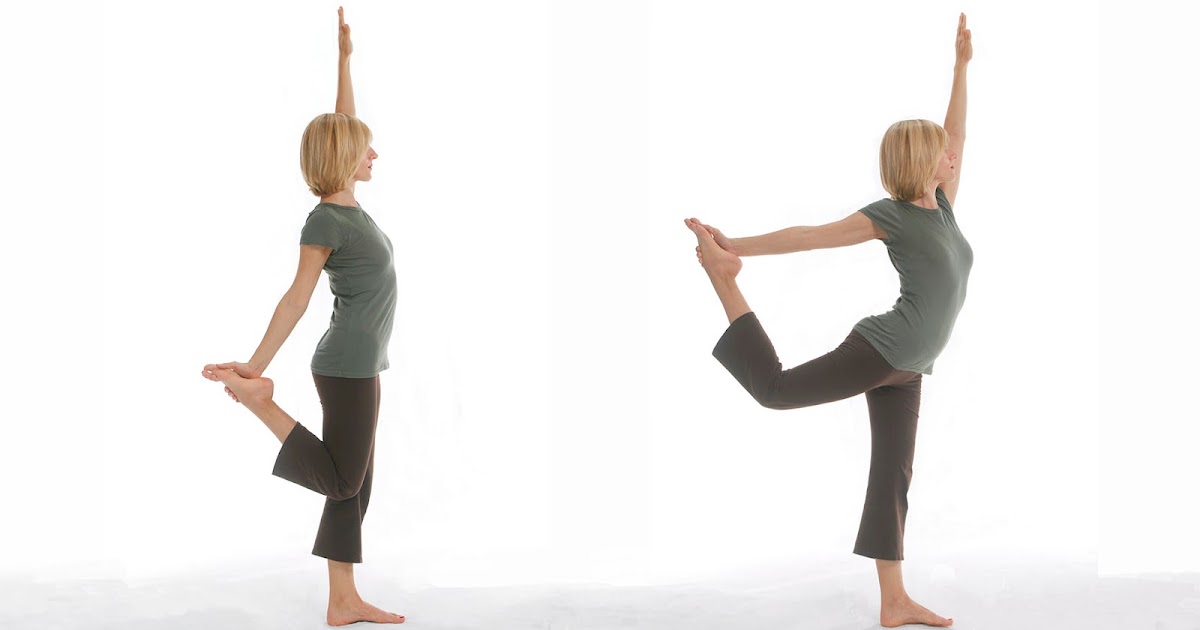 When you find the right muscles in yourself and feel how they should work, then it will be easier to follow them.
When you find the right muscles in yourself and feel how they should work, then it will be easier to follow them.
As I wrote earlier, I found the right muscles in myself when I went to the ballet and started doing exercises there without support (the barre had no effect). When you try to stand in a wildly uncomfortable position on one leg, and at the same time make some other movements in the air with the other, the body gradually begins to pull itself up, because it’s really easier to stand that way. I can’t forget my surprise at the new feeling of fatigue in my back, because nothing worked there before, despite 2 years of zouk.
2011 / 2016. It's a pity that in the first photo the topic covers the skin, the lower back is not visible. Except in the lower back, the back did not bend anywhere else. The body was like a sack of potatoes: where it was tilted, it fell all over there.
2. Hips and Legs
I would say that the back is the dancer's top drive and the hips are the bottom drive.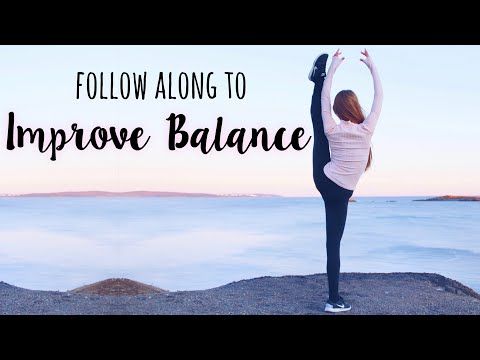 Both are equally important and significant for balance. A four-wheel drive dancer can control both his back and his hips equally. But learning to regulate the dance with the hips is easier and faster.
Both are equally important and significant for balance. A four-wheel drive dancer can control both his back and his hips equally. But learning to regulate the dance with the hips is easier and faster.
Due to their structure, the hip joints are highly mobile. This allows us to make many beautiful movements, sit on the splits, swing our legs, etc. But this same mobility is also a common cause of loss of balance. Any movement of the hips shifts your center of gravity forward, backward, left or right. If the center of gravity shifts within the feet, then everything is fine, but as soon as the amplitude of movement turned out to be slightly larger and the center of gravity went beyond the foot, you skidded.
Muscles of the thighs regulate joint mobility, stride length, tension in the legs. The point is that your hips should move only when you need to, only in the right direction and only with the necessary amplitude. Most often I use the thigh muscles when I need to keep the center in one point - rotations, "onda" in place, shifting the frame, counterbalances, etc.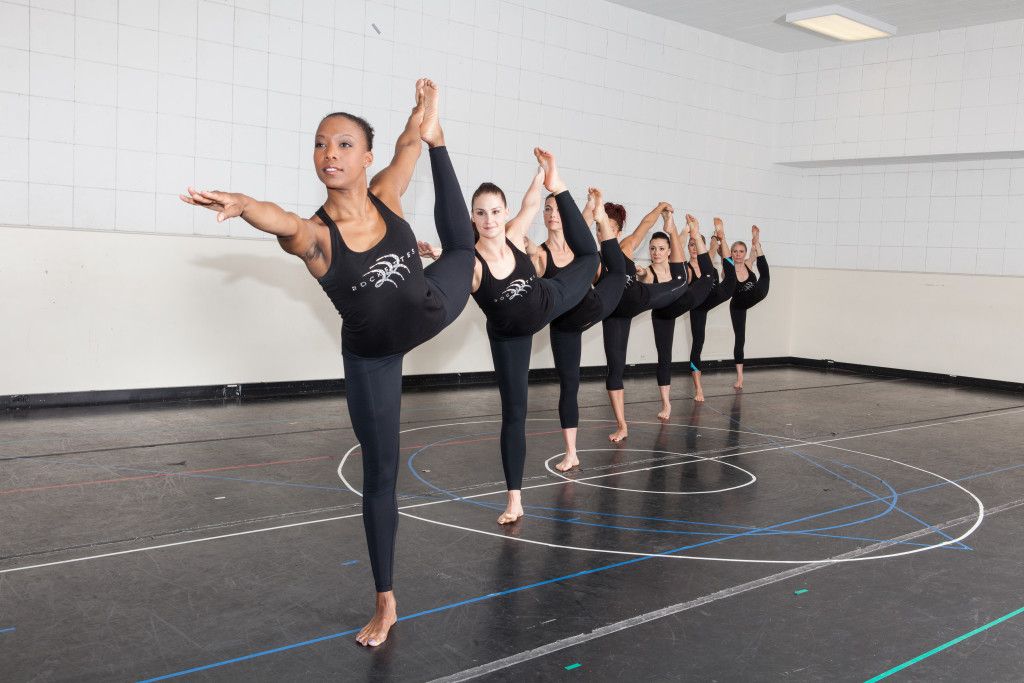
What happens in practice:
On the diagram you can see that there are as many different muscles here as in the back. Therefore, the formula "pull in the ass" is actually not very correct. This will come down for a beginner level, so as not to overload the brain with unnecessary information. Yes, and the ass, too, can be retracted in different ways.
First of all, naturally, the gluteus maximus is tense . Try to move your hips with a tense booty or take a step. You can't make an amplitude movement, right? The center of gravity cannot go beyond the foot. Great, the effect is already there. If all the information is new to you, and the body is not accustomed to working, concentrate only on this for a start.
In addition to the gluteus maximus, the gluteus medius and minimus are also tense if they are in good shape. I found them already on Jazz Modern, they raise the leg to the side in a non-reversible position. If they connect, it adds even more stability.
At the same time, if you stand upright, the pelvis does not turn forward. "Clamping a coin in the pope" is the wrong wording, and it is not necessary to feed the pelvis forward for stability. This position is good and useful in movements that require arching under the shoulder blades and when playing cambrai to reduce the load on the lower back. In other cases, this provision is not very effective. It is unaesthetic and blocks the work of other muscles that are useful for balance.
It is also very important to say here about a strong reduction of the legs to the center. All the crosses in the legs and just legs placed close together, if you try to bring them together, as if to squeeze something between them (the same coin), they give excellent fixation and stability! At the same time, long adductor muscles will work in the cross. If you put your legs together in parallel (non-reversible), the thin muscle of the thigh starts to work , and if you turn it out (socks to the sides) - adductor magnus .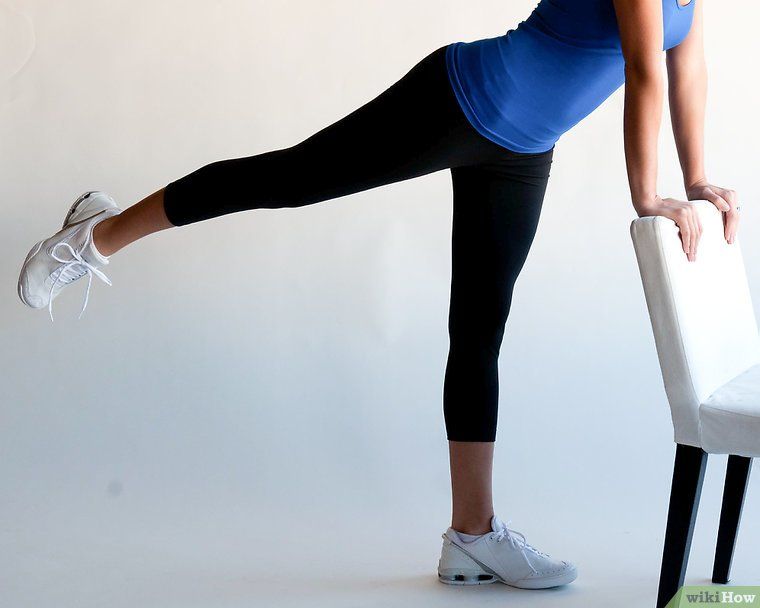 It is convenient for me to turn my feet a little for stability, because the large adductor muscle is better pumped and holds well, and even in the eversion position, the knees do not press against each other.
It is convenient for me to turn my feet a little for stability, because the large adductor muscle is better pumped and holds well, and even in the eversion position, the knees do not press against each other.
And another cool trick that I only recently realized at the ballet and noticed that it automatically appeared in the zouk as well. It helps a lot to keep tension in the uppermost part of the semitendinosus and biceps femoris muscles (look in the central picture) , at the junction with the gluteus maximus. This is the place under the booty where women traditionally get cellulite;) If you try to pull the butt up a little without bending at the same time in the lower back (!), then tension appears in this place. When the muscles there become strong enough, they also help to maintain balance, even standing on one leg. But if you move the pelvis forward, then this just won’t work. But it is rather a tool for an already pumped carcass.
Knee extension is also a useful tool. First, the knee-in leg is more stable than the relaxed leg. Secondly, it's just beautiful.
Plie (squat) as opposed to stretching the knees, also helps to keep the balance. If you perform movements in a small plié, other muscles work. Plie allows you to remove part of the load on the back if the partner strongly bends / collapses (the impulse will fall above the waist, and it’s easier to group this way). And also it is an indispensable help when the partner is shorter and often leads under his arm. Plie will help to keep balance if the muscles of the legs and priests are tightened at the same time. That is, this is not a humpty-dumpty on bending legs, but a fixed stable position.
3. The rest
What else affects the balance? These are all the joints that connect you to the ground and that conduct impulses in pairs.
Stop!
Perhaps this is the part of the body that has been underestimated by the social dancer for a very long time. And in vain. Feet affect balance, even if everything is fine with the back and hips. If the muscles of the feet are weak, not used to the load, then the feet periodically fall on the outer / inner rib or wrap inward and make your position more precarious. Blockages are especially bad in heels, as it increases the risk of injury.
And in vain. Feet affect balance, even if everything is fine with the back and hips. If the muscles of the feet are weak, not used to the load, then the feet periodically fall on the outer / inner rib or wrap inward and make your position more precarious. Blockages are especially bad in heels, as it increases the risk of injury.
How to strengthen, you will find a lot of information on the Internet. Rolling a rolling pin, pulling up a napkin, and ballet exercises will do. The main thing is that the dance should not be like this:
(this is me again, but I know for sure that many girls have similar photos)
Shoulders
Shoulders affect personal balance if you perform movements with an emphasis on the arm or shoulder (contemporary, breakdancing, hip-hop, yoga, etc.). Then the shoulder joint, in order to avoid injuries, should be well fixed, that is, strongly lowered down.
In pair dancing, the shoulders must also be in good shape to effectively transmit impulses and maintain balance.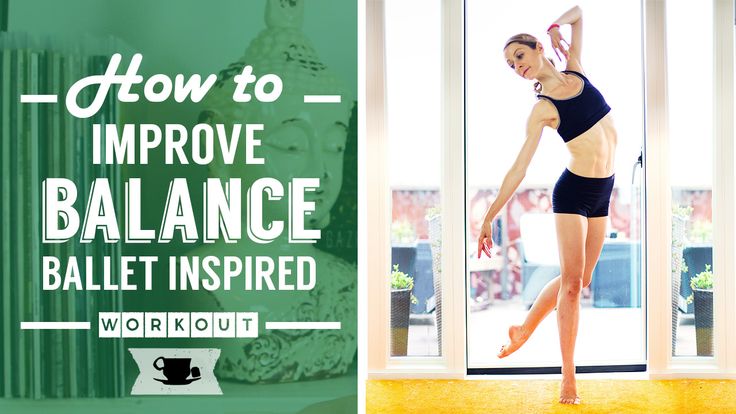 Shoulders are a mandatory part of FRAME . I will write about the frame next time as an important element of balance in a pair.
Shoulders are a mandatory part of FRAME . I will write about the frame next time as an important element of balance in a pair.
Hands, fingers
Also important. They should not break in or out when supported and framed.
CONCLUSION
- Good balance is the result of complex work with the muscles of your body, a good sense of space, center of gravity and partner.
- To develop balance, it is not enough just to dance social dances, this is too weak a load. To some extent, it will develop without additional training, but it will only be 10-15% of your potential. To reach a new level, you will have to leave your comfort zone and add more difficult situations to your body.
- You don't have to be a professional dancer to learn how to balance well. Age, level, degree of clumsiness and woodenness do not matter. But desire and perseverance - yes, they have.
To be continued! Next time - reasons for losing balance in a pair, distance, frame and simple ways to correct errors with balance.
You can follow the announcements of new articles through the VK group: https://vk.com/zoukability
5 tips to help you make progress in dancing
Is it possible to quickly improve your dancing skills with a few simple and effective steps? Yes! Read our tips to improve your dance technique.
Whether you're a beginner or an experienced dancer, whether you're into ballet, modern jazz, hip hop, or any other style, these 5 tips will help you reach your peak.
Would you like to change your dance costume while keeping the same clothes? This can be done with one accessory or piece of clothing - a favorite item that can be worn in many ways.
Depending on your style of dancing or how you feel at the moment, you can wear this item however you want right now to give yourself a whole new look.
Your dancewear is part of your expression, so get creative by choosing an outfit that reflects your personality. Mix styles and develop your creativity.
Mix styles and develop your creativity.
What dancer has not had difficulty maintaining balance during the batman retreat or while performing a pirouette without a somersault?
To keep a good balance, remember this: when you move into a semi-pointe position, automatically think about getting taller, as if someone is pulling you up. Press down on the ground with the foot that touches the floor to keep a firm footing. Also pay attention to the muscles of the core: tighten the stomach, imagining that the navel should touch the spine, and tighten the gluteal muscles.
Dancing is not always easy to gracefully express yourself and see your body moving smoothly and elegantly. However, viewers often pay attention to the upper half of the dancer's body. To become more graceful, try to move in a relaxed way and keep a natural expression on your face. No one should notice the slightest sign of effort in your eyes!
Free your head and let it move, don't tense up.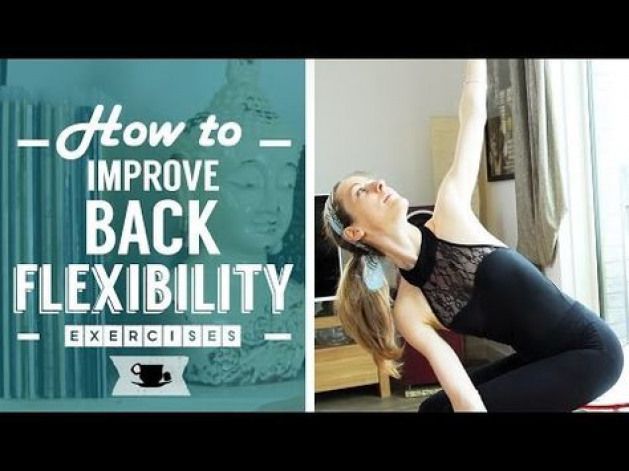 Do not spread or close your fingers as if you are holding something. A good dancer should have "light" hands. Your fingers should be controlled but relaxed (imagine water dripping from your fingertips and focus on the sensation).
Do not spread or close your fingers as if you are holding something. A good dancer should have "light" hands. Your fingers should be controlled but relaxed (imagine water dripping from your fingertips and focus on the sensation).
Watch how you hold your hand: from the shoulder blades to the very nails. Keep your elbow from "falling" by taking care to support your wrist. Good support and resistance will help you shape curves that are smooth and elegant!
Flexibility is not required in dance, but it remains a highly sought-after characteristic for many dancers nonetheless. If it is not an inborn trait, it can be developed gradually, with patience and care, taking into account the capabilities of your body.
To make your body more flexible, we recommend a special exercise - splits . It is recommended to perform it only under the supervision of trainer ! Find a trainer at All Do Sport to train efficiently and safely.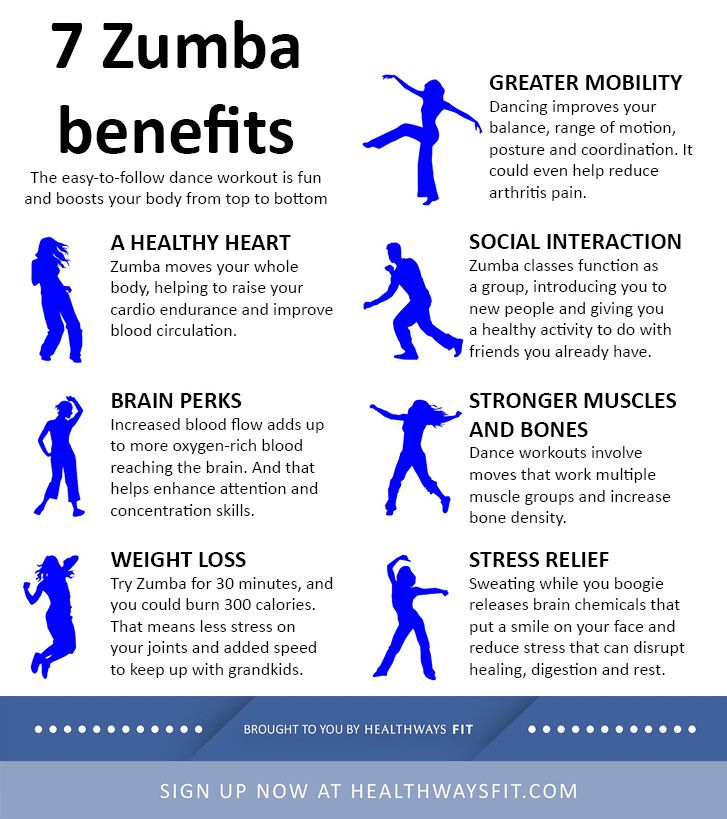
First, warm up for 10 minutes, alternating several basic exercises. Sit on the floor with your legs together in a butterfly position and do a few rolls on your back. Then warm up your legs with a few exercises, do a series of jumps and a few deep lunges, and move on to the next:
- Execution: lie on your back and put your feet on the wall. Use your hands to move as close to the wall as possible. Touch the wall with your buttocks. Straighten your legs up and stretch your toes, keeping your feet and knees together. Legs and buttocks should rest on the wall. Start slowly spreading your legs apart. Lower them down to the most extreme position. Fix this position and try to relax, allowing gravity to push your legs towards the floor. Lightly press your hands on your feet. Gradually open your legs wider and wider, stretching your muscles.
- Breathing: inhale deeply and exhale slowly throughout the exercise to relax and oxygenate your muscles.
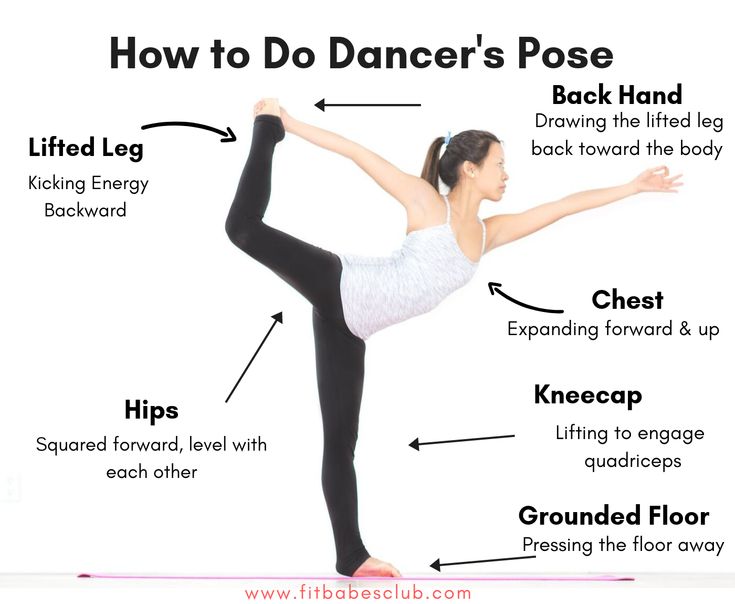 This will gradually help your body become more flexible.
This will gradually help your body become more flexible. - Safety Tips: make sure you keep your buttocks firmly against the wall and your back against the floor throughout the exercise. Pull in your stomach and lower your legs as low as possible, but not with force!
Do this exercise once every 15 minutes.
If you are already flexible enough, put on ankle weights such as Gym Weight Domyos. They will increase muscle tension and add extra inches to your stretch!
Before the performance, it is important to take time for yourself and relax. Every dancer has their own set of tips for overcoming fear on stage. Do you want to know the proven way? Learn to relax through conscious and deep belly breathing.
Really deep breathing brings a sense of calm and awakens your mental powers. It also helps to better oxygenate your muscles. To feel good about your body and mind, do this relaxation exercise while preparing for the performance and on the day of the event itself:
- Sit with your back against a wall or lie on your back
- Breathe in through your nose, slowly and deeply
- Place one hand on your belly and exhale through your mouth (you can gently press on your belly with your hand)
- Then inhale through the nose, expanding only the belly (the belly should rise)
- Exhale slowly through your mouth.
